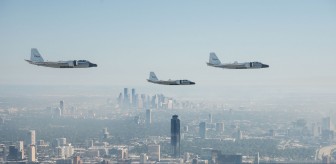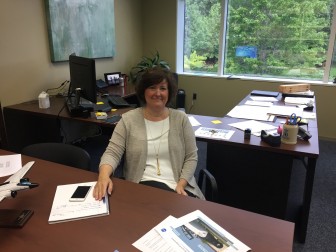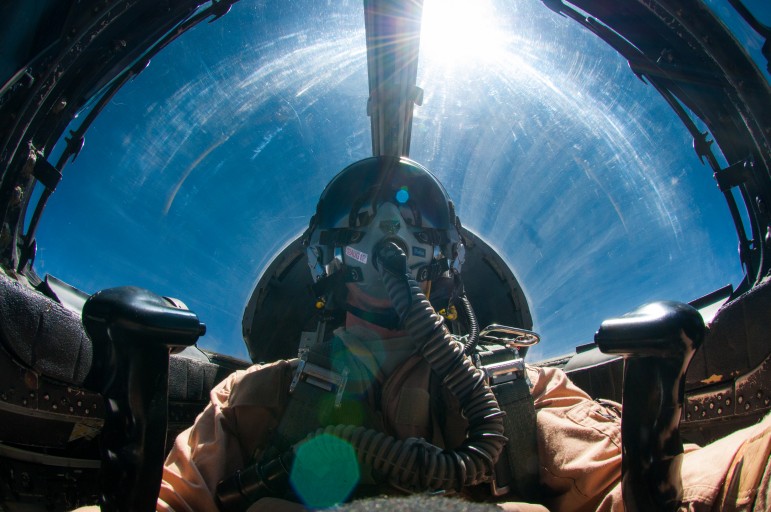High Technology Could Solve Solar Mysteries During Eclipse
Millions of Americans will see Monday’s solar eclipse, but besides the delight and awe that comes with such a big, cosmic event, it could yield important new measurements and a better understanding of our solar system. Cutting-edge imaging technology from a Birmingham-based nonprofit is set to fly along the eclipse’s path on two former military planes now operated by NASA.
Window (or Shadow) of Advantage
Normally, the sun is so bright and hot it makes studying anything near it difficult. But Birmingham’s Southern Research is taking advantage of the eclipse. Don Darrow of NASA and Southern Research says even with the best heat-imaging cameras, it’s hard to get a read on Mercury, the planet closest to the sun. It’s complicated, but he says, “basically, it’s too hot to be able to get accurate measurements through infrared. So this opportunity that we have, with the moon blocking it out — we’ll actually be able to get the first temperature gradients of Mercury that have been recorded.”
Temperature maps of Mercury won’t be the only goal when Darrow and an engineer in another retooled B-57 bomber start chasing the moon’s shadow south of Saint Louis. High-resolution images and video could help scientists solve a mystery at the center of our solar system.
“The intention is to try to identify why the outer layers of the sun are so much hotter than some of the inner layers,” he says.
And there’s yet another puzzle that Southern Research’s imaging system could resolve: whether asteroids called vulcanoids near Mercury exist. Astronomers think they might, but small objects close to the sun are hard to detect.
No Pressure at All
The telescopic cameras will try to find these objects and more from almost 10 miles above the Earth.
“We have a joystick in the back, like you’d see in the cockpit of an airplane. That’s how we manually control the sensors,” he says, adding, “There’s a lot that can go wrong. And I have to be on my game in order to make sure that I can either head off anything that I see coming, or overcome anything that happens.”
The Need for Speed
Down on the ground in Birmingham, Southern Research engineering project director Johanna Lewis says the eclipse moves really fast, so they have a strategy: two planes.
“One will fly with the shadow, but the shadow moves faster than the plane moves,” she explains. “So we’ll be able to get about four minutes of data out of the first plane. The second plane will come in and pick up where it left off and collect another four minutes. And so we’ll be able to stretch that to about eight minutes worth of data.”
That’s eight minutes of eclipse when the sun won’t overpower or damage the sensors. Lewis has faith in the mission team, too:
“NASA provides the planes, Southern Research provides the instruments that collect the data, and [Texas-based nonprofit] Southwest Research will be processing the data and doing the analysis.”
Some of those findings could be released in about a month. Darrow sees many potential benefits here.
“This mission is going to be historic for the Mercury observation, but I think we’re going to get some phenomenal images of the sun as well.”
Those images are set to be live-streamed on NASA TV. And you won’t even need special glasses or a modified B-57 bomber to see them.
Birmingham is 3rd worst in the Southeast for ozone pollution, new report says
The American Lung Association's "State of the Air" report shows some metro areas in the Gulf States continue to have poor air quality.
Why haven’t Kansas and Alabama — among other holdouts — expanded access to Medicaid?
Only 10 states have not joined the federal program that expands Medicaid to people who are still in the "coverage gap" for health care
Once praised, settlement to help sickened BP oil spill workers leaves most with nearly nothing
Thousands of ordinary people who helped clean up after the 2010 BP oil spill in the Gulf of Mexico say they got sick. A court settlement was supposed to help compensate them, but it hasn’t turned out as expected.
Q&A: How harm reduction can help mitigate the opioid crisis
Maia Szalavitz discusses harm reduction's effectiveness against drug addiction, how punitive policies can hurt people who need pain medication and more.
The Gulf States Newsroom is hiring a Community Engagement Producer
The Gulf States Newsroom is seeking a curious, creative and collaborative professional to work with our regional team to build up engaged journalism efforts.
Gambling bills face uncertain future in the Alabama legislature
This year looked to be different for lottery and gambling legislation, which has fallen short for years in the Alabama legislature. But this week, with only a handful of meeting days left, competing House and Senate proposals were sent to a conference committee to work out differences.










